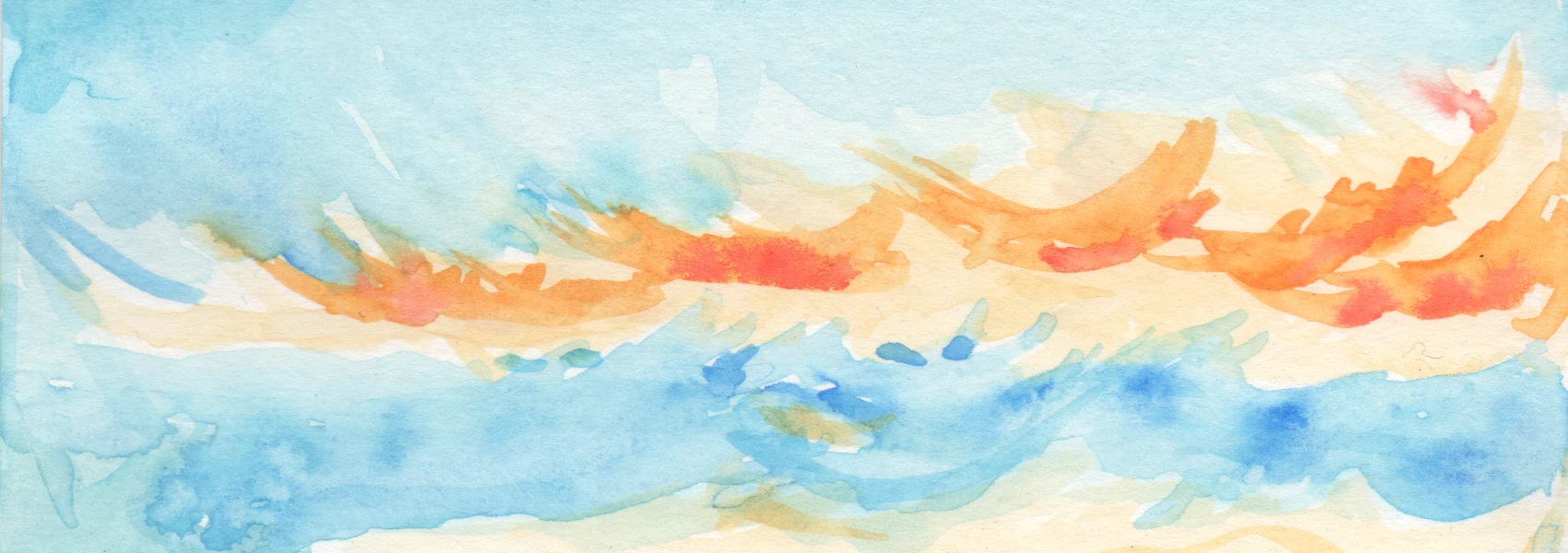Last week, I wrote about my long-held aesthetic philosophy that it is not necessary to explicitly talk about your feelings or yourself to achieve self-expression in poetry. In fact, in my poetry I take it rather far and focus almost exclusively on tangible sensations and external objects, trusting that if there is emotion, it will become apparent. For example, I wrote about nearly unbearable sexual yearning in the poem Fire Danger: High without ever saying anything about the feeling directly. I don't know if the poem actually makes people feel it. I hope it does. I would not find it interesting to explain the feeling, not in poem form anyway.
I take poetry rather seriously. I write poems to evoke subtle gestalt sensations in people who read them, what Eugene Gendlin called "felt sense" in his book Focusing. It's similar, I think, to what Zen people call suchness. I called it "the taste" in my last post because that's what I named it as a child, but I also sometimes call it "the thingness of things." It's nearly impossible to talk about directly without sounding borderline incoherent. It's probably impossible to evoke the thingness of things reliably and and impossible to know if you've succeeded, but it's also the only artistic goal that seriously interests me. I mean, for me, and for poetry. In other media and in other people's work, there's a whole lot of other stuff that interests me.
Unlike when I write poetry, when I draw or paint, I don't care all that much about the outcome or the effect of the work on others. I enjoy the process and sometimes I enjoy the outcome. It's possible I can be so free and easy about it because I'm not very skilled, so I can't actually control the outcome anyway.
Nonetheless, when I started watercoloring this summer, I brought to it my deep-rooted aesthetic of depicting the world to express myself.
A realistic painting #
One of the nice things about watercolor is that it encourages spontaneity and expressiveness. However, I noticed that when I tried to paint objects from abstraction or modeled on other depictions, I tended to revert to pretty boring color combinations and rather flat color, sort of stereotyped. That is, when I tried to paint based on purely mental objects, the expressiveness was missing.
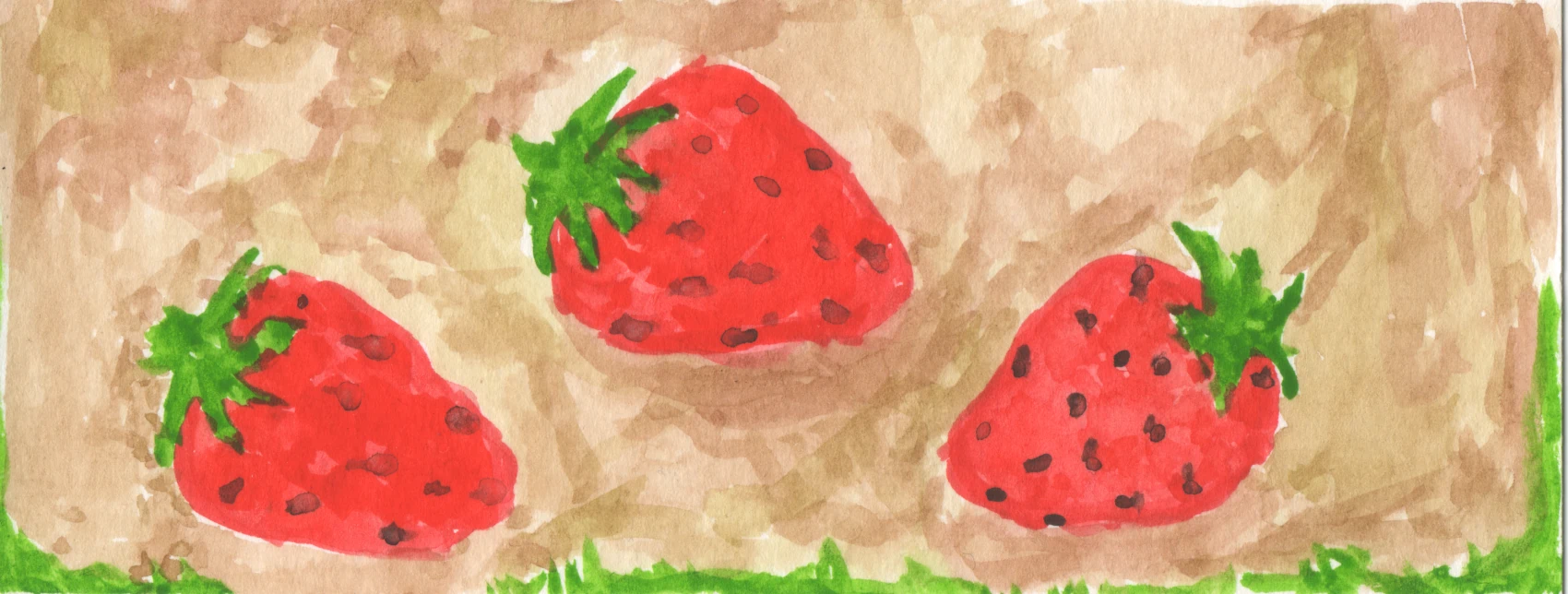 Strawberries painted from my imagination, rather flat and the little green bits look wrong.
Strawberries painted from my imagination, rather flat and the little green bits look wrong.
On the other hand, if I tried to paint things from life, even very close up or very abstracted, the shapes and colors I painted were much more interesting. The paintings were better. I would have to pay very close attention to the things I was looking at, especially their colors, and as I did that I invariably noticed how there was so much more detail in reality than I could paint, and of course it changed so quickly that there was no way for me to get it in time.
Even when I try to paint reality, my little closeup pleinair exercises, it's obvious how much interpretation there is. It's unavoidable.
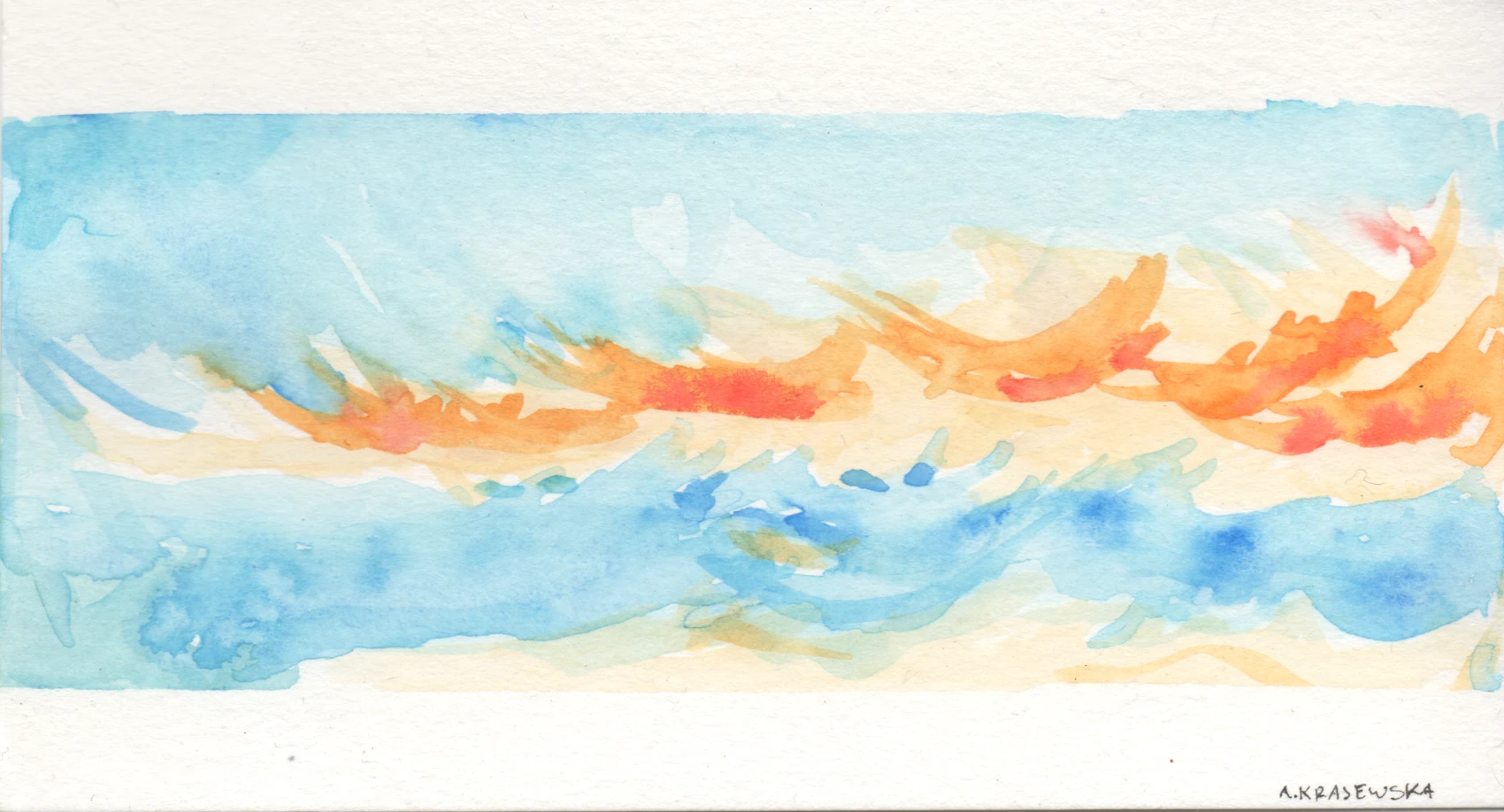
In the few minutes I spent painting these clouds, the colors and shapes changed so much that the painting became more of an abstract compression of all the versions I saw.
Basic human emotions like ecstasy and doom #
Nonetheless it's very alluring to try to paint feelings. Something about the flow of the watercolor paint, the sense of movement and spontaneity, seems to promise that you could do it if you just tried. Maybe you could even make other people feel them. I keep thinking of Mark Rothko paintings of abstract color blocks, which I found surprisingly fascinating in person.
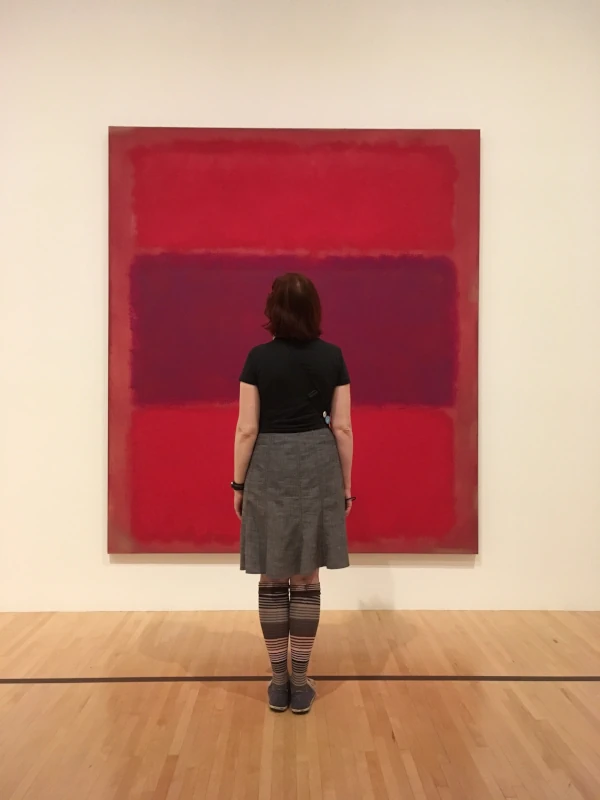
I gazed intently at each of the Rothko paintings during a visit to the MOCA in 2018.
Rothko certainly intended to make people feel things, not just see colors:
Mark Rothko sought to make paintings that would bring people to tears. 'I'm interested only in expressing basic human emotions—tragedy, ecstasy, doom, and so on,' he declared. 'And the fact that a lot of people break down and cry when confronted with my pictures shows that I can communicate those basic human emotions….If you…are moved only by their color relationships, then you miss the point." Karen Kedmey via MoMa website
Following my dreams to more expressive watercolors #
Despite the allure of pure, expressive color, I kept painting my rather doggedly realistic, or realstic-ish, to to the best of my ability, studies. Then, one night, I had a dream that inspired me to try something different.
I dreamed I was in an English class. It was a college class, or maybe even graduate school, because my anxiety dreams have moved on from high school math class to more sophisticated terrors. The professor instructed us to use watercolor pencils to paint one of the emotions written on the blackboard. The emotions were written out as phrases. The exercise was meant to be fun, a nice break, but I spent the whole class trying to read the board and find materials to draw with, and by the time the class ended I had nothing.
When I awoke, I realized I hadn't done much watercoloring for a while because I've been so busy with my new cat. The following day I took my watercolor kit and went for a hike. I found a hillside with grass that struck me as a good subject and started to paint. At the same time, I was feeling a sense of impending doom, some kind of inexplicable anxiety. I thought it was probably about work but I couldn't really place it.
So, I decided to follow my dream and instead of painting what I saw completely realistically, I added colors from my emotions. I literally let my emotions color the scene.
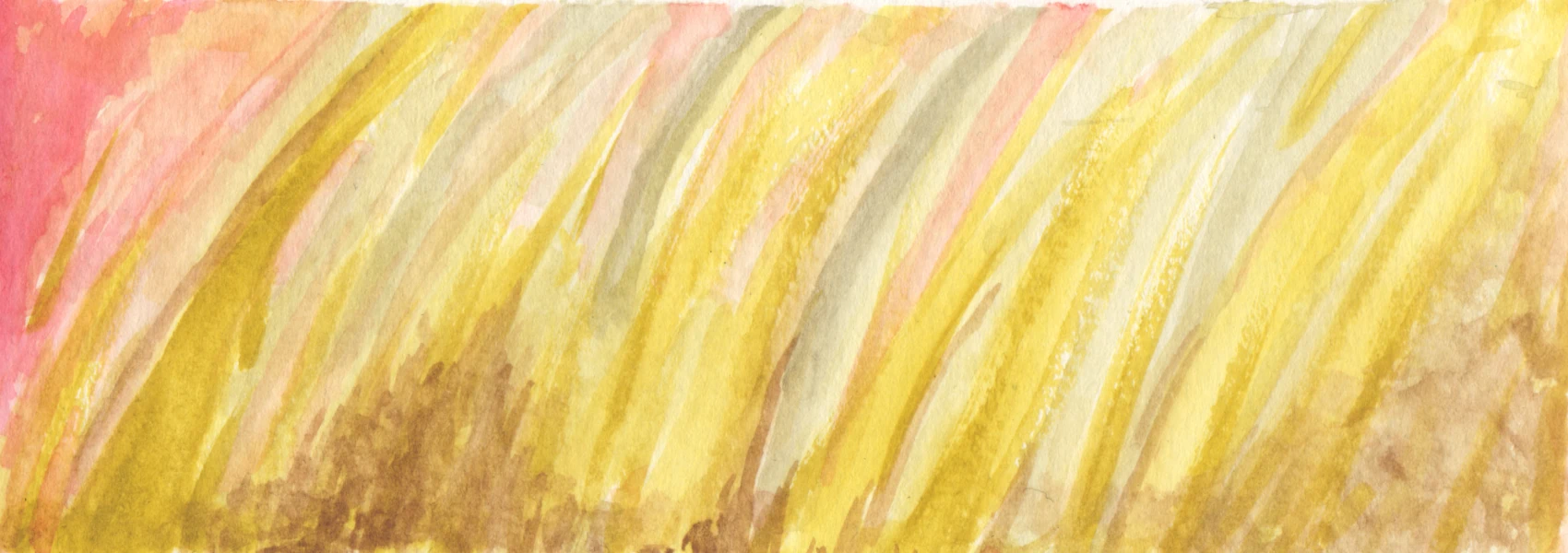
The grass bends in the wind of impending doom.
After all this time of being devoted to expressing what I see, what I perceive, it's been interesting to try the approach of deliberately blending my inner state into the thing I'm making. I don't know how effective it is artistically, but that's OK. I paint mostly for the pleasure of of the process, as an exercise, and as an excuse, aha, to observe the world with great attention.
Find yourself by looking outside #
Have you ever noticed how the world seems to look different depending on your mood? When I was completely depressed, I felt as though the world was distant from me and covered in a horrible film which I could not pierce. When I was falling in love, everything seemed to be filled with a glowing light. And when I have been anxious, everyone seemed rude and mean.
To find out how you are feeling, you don't have to actively introspect[1]. Instead, carefully attend to the world outside. Attending to the world is attention to your own self, because out there is in in here.
You could just spend hours observing the world with your senses. There are many forms of meditation that involve turning your attention outward by looking, listening, paying attention to sensations as you move, in a variety of combinations. I practice some of them. However, my patience to be still and look or listen is limited. I want to get up and move and do something. Or, my attention gets lazy and diffuse, not really looking but drifting dreamily. Watercolor painting gives me the something to do so I stay with the looking, and the discipline of painting keeps me alert, because I must look carefully to get the shapes and colors.
And so I come back to this: I create poetry art for others, but I paint for myself, to enjoy the process and as a form of meditation.
I think it might even be counterproductive, like trying to find out what your face look like with a magnifying mirror and then finding gross imperfections that are only there because you've started to pick at the distorted closeup of your skin. ↩︎
